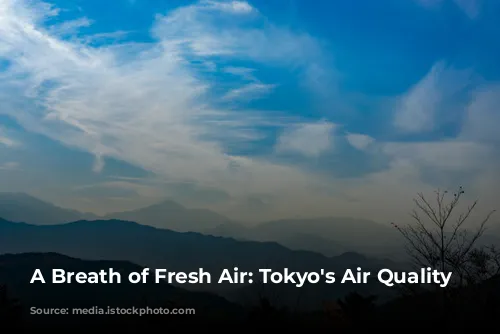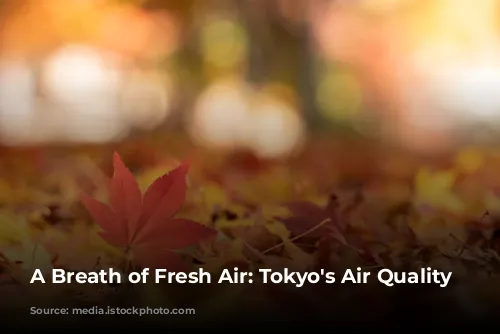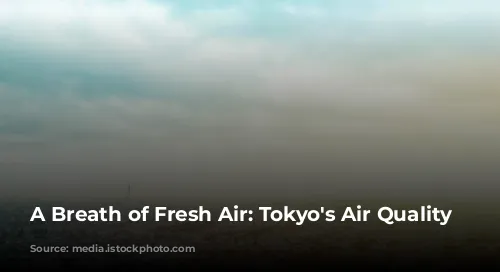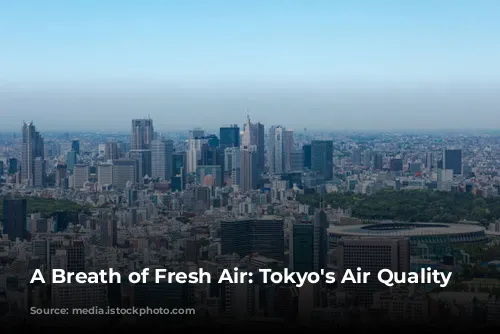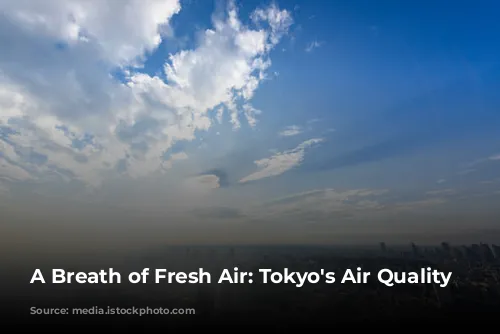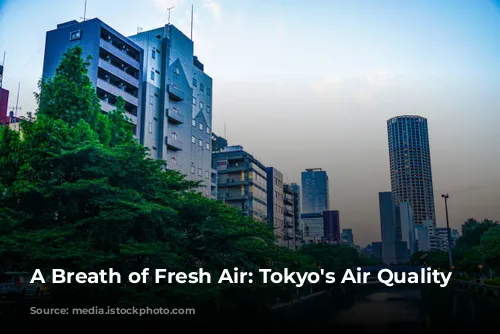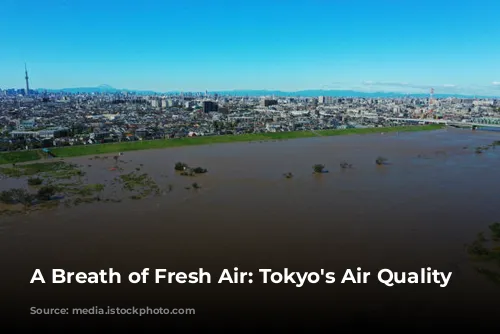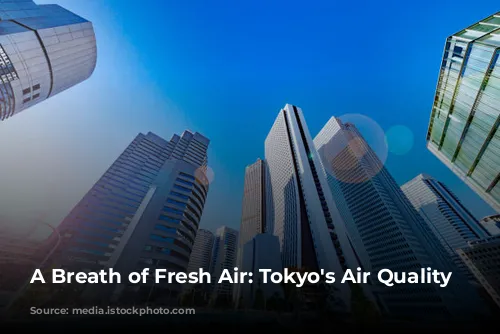Tokyo, the vibrant capital of Japan, boasts a bustling population of over 14 million residents. This bustling metropolis, once known as Edo, transformed from a humble fishing village into a powerhouse of political and cultural influence during the Tokugawa Shogunate, which established its seat of power here in the early 17th century. Today, Tokyo is a beacon of technological advancement and holds a prominent position in Japan’s thriving business and finance sector.
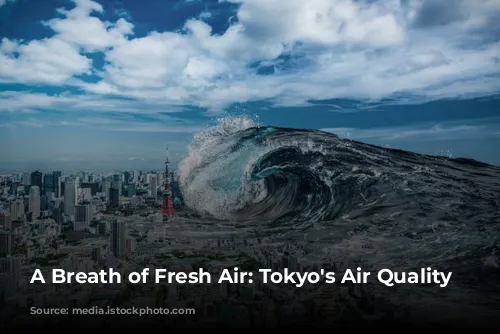
Breathing Easy: Tokyo’s Air Quality
While Tokyo’s rapid urban growth and industrialization have brought progress, it’s also crucial to examine the city’s environmental impact. Air quality, in particular, is a significant concern for any city. Thankfully, Tokyo has demonstrated remarkable progress in managing its air pollution.
In 2019, Tokyo’s average PM2.5 (fine particulate matter) reading was 11.7 μg/m³, placing it squarely within the “good” air quality range. This classification requires a PM2.5 reading between 10 and 12 μg/m³. Tokyo’s commendable air quality even surpassed the World Health Organization’s (WHO) target of 10 μg/m³ or less for PM2.5 readings during several months of the year.
Globally, Tokyo’s air quality ranked 1924th out of all cities, and within Japan, it placed 225th. These rankings underscore Tokyo’s generally clean air quality. While Tokyo enjoys good air quality overall, it’s not immune to occasional pollution spikes. Some months, PM2.5 levels rise, placing Tokyo in the “moderate” air quality category. Although Tokyo’s air quality is generally favorable, it’s essential to address these occasional pollution issues for the sake of its residents’ health.
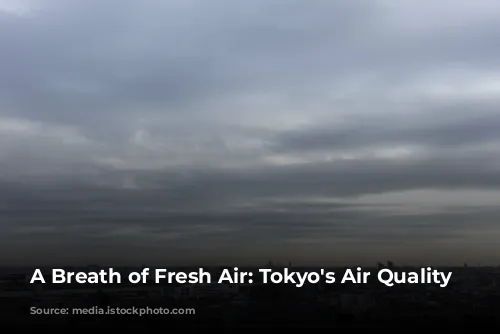
Unveiling the Sources of Pollution
Tokyo’s journey to a cleaner environment has been remarkable, but there are still contributing factors to air pollution.
The city’s rapid industrialization over the past century has left a legacy of industrial areas and factories. Although pollution levels have decreased compared to the heavily industrialized past, factories and industrial zones still contribute to air pollution. These areas release elevated levels of PM2.5 and PM10 (larger particulate matter), along with harmful chemicals like nitrogen dioxide (NO2) and sulfur dioxide (SO2).
Factories, especially those utilizing fossil fuels like coal, are key contributors to air pollution in Tokyo. However, the city’s strict fuel standards and regulations have significantly mitigated the impact of these emissions. Nevertheless, emissions from factories contribute to overall air pollution levels.
Vehicular emissions are another significant source of pollution in Tokyo. The city had approximately 4 million registered vehicles in 2014, and this number has undoubtedly grown since. Although Tokyo enforces stringent fuel standards, the sheer volume of vehicles on its roads inevitably results in elevated pollution levels.
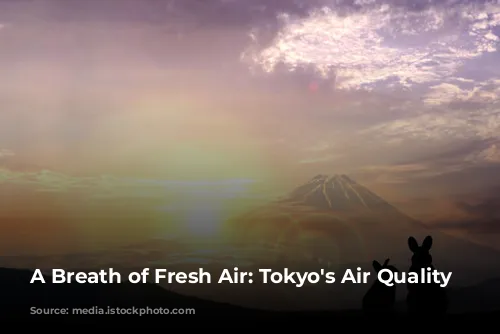
Seasonal Variations in Air Quality
Tokyo’s air quality fluctuates throughout the year, reflecting the interplay of various factors.
Analyzing data from 2019, a clear pattern emerges. January to August, along with December, saw the highest PM2.5 readings, indicating a seasonal trend.
February, with a PM2.5 reading of 17.4 μg/m³, was the most polluted month, followed by March and December with readings of 13.9 μg/m³ and 13.4 μg/m³, respectively.
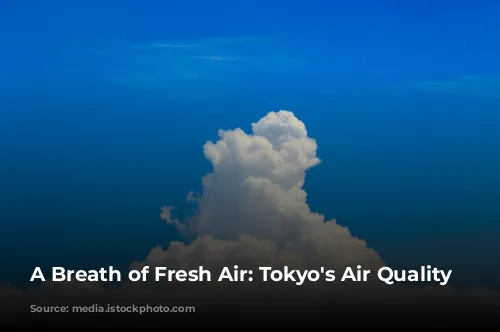
When the Air is Purest
In contrast to the months with higher pollution levels, the latter half of the year generally enjoys cleaner air.
September to November experienced the lowest PM2.5 readings, with 9.4 μg/m³, 8.9 μg/m³, and 9.8 μg/m³, respectively. October emerged as the cleanest month, offering residents the best air quality.
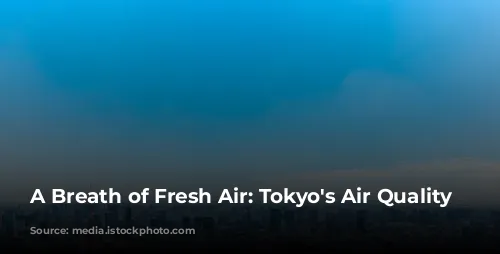
A City Striving for Cleaner Air
Over the past few years, Tokyo has demonstrated a commitment to cleaner air. Although the improvements may seem modest, in a city with already good air quality, even small changes can make a significant difference.
In 2017, Tokyo’s PM2.5 reading was 13 μg/m³, placing it in the “moderate” category. This reading slightly increased in 2018 to 13.1 μg/m³. However, in 2019, Tokyo’s PM2.5 reading dropped to 11.7 μg/m³, moving it from “moderate” to “good” air quality.
This positive trend is a testament to Tokyo’s effective implementation of air quality improvement initiatives. With continued dedication and proactive measures, Tokyo has the potential to achieve its goal of cleaner air year-round, aligning with the WHO’s target goal for air quality.
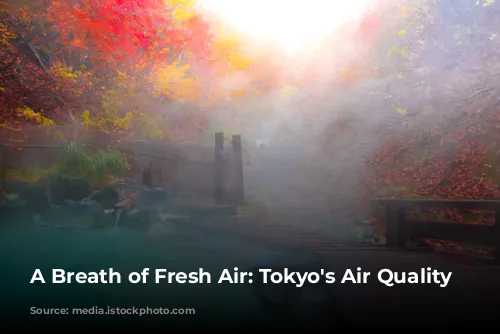
The Invisible Threats: Identifying Pollutants
The main sources of air pollution in Tokyo – vehicle emissions and industrial activities – release a variety of harmful pollutants.
Nitrogen dioxide (NO2), a prominent pollutant, is especially prevalent in areas with heavy traffic.
Fine particulate matter (PM2.5), including black carbon, a major component of soot, poses significant health risks. Black carbon is a dangerous form of PM2.5 with both carcinogenic and climate-changing properties.
Volatile organic compounds (VOCs), released from cars, factories, industrial materials, and even household items like paints and varnishes, are also present in Tokyo’s air. VOCs include compounds like benzene, toluene, formaldehyde, and ethylene glycol. These chemicals have detrimental effects on human health, emphasizing the importance of preventative measures when pollution levels are high. Wearing fine particle filtering masks, limiting outdoor activities, and minimizing strenuous outdoor exercise can help protect individuals during periods of higher pollution.
By understanding the sources, seasonal variations, and types of pollutants in Tokyo’s air, residents can take proactive measures to safeguard their health and contribute to the city’s ongoing efforts towards cleaner air. As Tokyo continues to grow and evolve, its commitment to clean air is essential for the well-being of its residents and the health of the planet.
